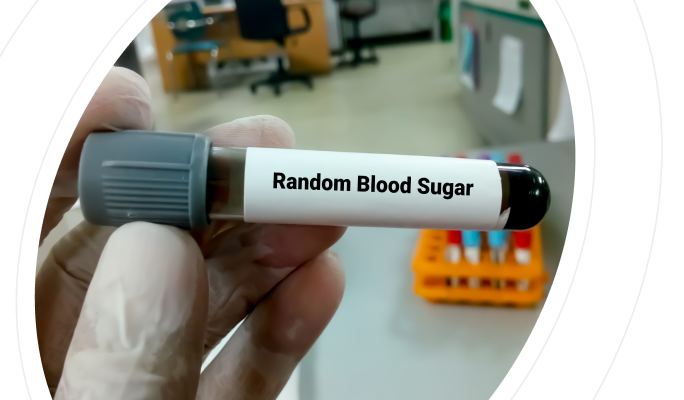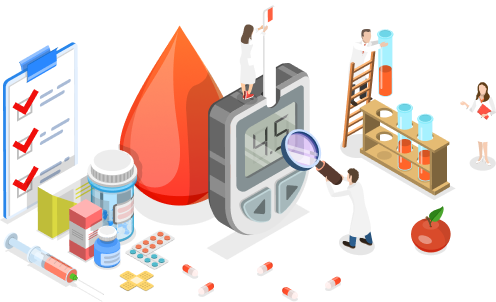What Is Blood Sugar (Glucose) Random?
Blood Sugar (Glucose) Random, commonly referred to as random blood sugar (RBS) test, is used to measure the glucose levels in the bloodstream at any given time, regardless of when the individual last ate. Unlike fasting blood sugar tests which require the patient to refrain from eating or drinking anything other than water for a certain period (usually overnight), random blood sugar tests provide an immediate snapshot of glucose levels in the body.
Why Is Random Glucose Testing Conducted?
Random glucose testing serves various important purposes in healthcare. It is a vital tool for diagnosing diabetes. Individuals displaying symptoms like frequent urination, excessive thirst, fatigue, or unexplained weight loss may undergo this test to determine if their symptoms stem from elevated blood sugar levels. Additionally, random glucose testing is crucial for monitoring diabetes management. For those already diagnosed with diabetes, regular testing helps track blood sugar levels throughout the day, ensuring they remain within target ranges and aiding in adjusting medication doses or lifestyle factors accordingly. Furthermore, this test is valuable in assessing hypoglycemia, a condition characterised by low blood sugar levels, which can lead to symptoms such as shakiness, confusion, or fainting. By promptly identifying low blood sugar episodes, individuals with diabetes can take corrective actions to prevent complications. Book a blood sugar random test in in Barasat for ONLY ₹16* Book a blood sugar random test in Barasat for ONLY ₹40*
Blood Sugar (Glucose) Random Test Price in Barasat - Compare Prices at 9 Labs
Name
Proc. Time
Rating
Price
SUMMARY – KEY PURPOSES OF RANDOM GLUCOSE TESTING:
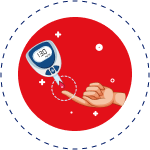
It is commonly used as a screening tool to detect diabetes or prediabetes in individuals who may be at risk or those experiencing symptoms associated with high blood sugar levels.
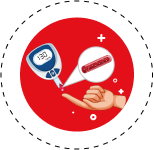
For individuals already diagnosed with diabetes, random glucose testing helps monitor blood sugar levels throughout the day to ensure they remain within target ranges and to assess the effectiveness of diabetes management strategies, including medication, diet & exercise.
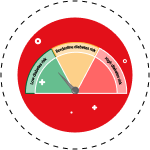
In addition to monitoring for high blood sugar levels, random glucose testing can also help diagnose and manage hypoglycemia – low blood sugar. This is particularly important for individuals with diabetes who can experience episodes of hypoglycemia due to insulin or medication.
How Does Random Glucose Testing Work?
Random glucose testing works by measuring the concentration of glucose (sugar) in the bloodstream at a specific moment, regardless of when the individual last ate. The test provides immediate insights into the individual’s blood sugar levels, helping heal.Book a blood sugar random test in Barasat for ONLY ₹40*
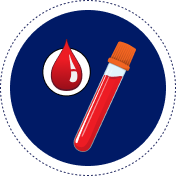
Glucose Measurement
Once the blood sample is obtained, it is analysed using a glucose meter for immediate results or sent to a laboratory for more precise measurement. Glucose meters are handheld devices that use enzymatic reactions to detect glucose levels in the blood sample. The test strip containing the blood sample is inserted into the meter, and the glucose concentration is displayed on the meter’s screen within seconds.

Blood Sample Collection
The test begins with the collection of a blood sample, which can be obtained through a finger prick or a venous blood draw from the arm. For finger prick testing, a lancet is used to puncture the skin on the fingertip, allowing a small drop of blood to be collected on a test strip. Alternatively, a needle is inserted into a vein in the arm to draw a larger blood sample for laboratory analysis.
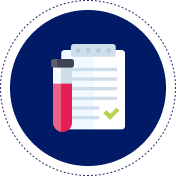
Interpretation of results
The results of the random glucose test indicate the individual’s blood sugar level at the time of testing. Normal blood glucose levels typically range between 70 to 140 milligrams per deciliter (mg/dL) or 3.9 to 7.8 millimoles per liter (mmol/L), depending on the unit of measurement used. Elevated glucose levels may indicate hyperglycemia (high blood sugar), while low glucose levels may indicate hypoglycemia (low blood sugar).
Recommended Frequency By Age
Age | <6 Years old | 6-12 Years old | 13-19 Years old | 20+ Years old | |
|---|---|---|---|---|---|
| Fasting | With Diabetes | 80-180 mg/dl | 80-180 mg/dl | 70-150 mg/dl | 80-130 mg/dl |
| Without Diabetes | Less than 100mg/dl | Less than 100mg/dl | Less than 100mg/dl | Less than 100mg/dl | |
| 1-2 hours after eating | With Diabetes | -180 mg/dl | 140 mg/dl or less | 140 mg/dl or less | Less than 180 mg/dl |
| Without Diabetes | Less than 120-140mg/dl | Less than 120-140mg/dl | Less than 120-140mg/dl | Less than 120-140mg/dl | |
| Bedtime | With Diabetes | 110-200 mg/dl | 100-180 mg/dl | 90-150 mg/dl | 100-140 mg/dl |
| Without Diabetes | Less than 100 mg/dl | Less than 100 mg/dl | Less than 100 mg/dl | Less than 100 mg/dl | |
| A1C | With Diabetes | <6.5-8% depending on the patient | <6.5-8% depending on the patient | <6.5-8% depending on the patient | <7-8% depending on the patient |
| Without Diabetes | <5.7% | <5.7% | <5.7% | <5.7% | |
Risks Associated With Random Glucose Testing
While a Blood Sugar (Glucose) Random test is generally safe and non-invasive, there are minimal risks associated with it, such as minor bruising or soreness at the site where blood is drawn. Some individuals may also experience lightheadedness or fainting during or after the procedure, particularly if they have a fear of needles or a history of vasovagal response.
Interpreting Random Glucose Test Results. Random blood sugar level chart
| Blood sugar Classification | Normal | Prediabetes | Diabetes |
|---|---|---|---|
| Fasting | 70-100 mg/dL | 101-125 mg/dL | 125mg/dL & above |
| PP (Post meal blood sugar level after 2 hrs) | 70-140 mg/dL | 141-200 mg/dL | 200mg/dL & above |
| Random blood sugar level | 70-140 mg/dL | 140-200mg/dL | 200mg/dL & above |
For a random glucose test, the interpretation of results is crucial in determining potential diabetes or pre-diabetic conditions. A result of 200 mg/dl or higher typically suggests elevated blood sugar levels, indicating a likelihood of diabetes. However, medical professionals often advise confirming such findings with additional tests on separate occasions for accuracy and reliability. So, start with a blood sugar random test in Barasat for ONLY ₹16*
To further solidify the diagnosis, doctors may order different types of tests, including fasting glucose tests or Oral Glucose Tolerance Tests (OGTT).
Prediabetes signifies blood glucose levels higher than normal but not yet at the diabetic threshold. This condition, also known as impaired glucose tolerance (IGT) or impaired fasting glucose (IFG), alerts individuals and healthcare providers to the increased risk of developing diabetes. Fortunately, proactive measures such as lifestyle modifications (e.g., weight management, regular exercise) and certain medications can effectively mitigate this risk, potentially preventing the onset of diabetes altogether.
Tests for Type 1 Diabetes, Type 2 Diabetes, and Prediabetes
Diagnosing diabetes and prediabetes involves various tests to assess blood sugar levels and other related factors..
